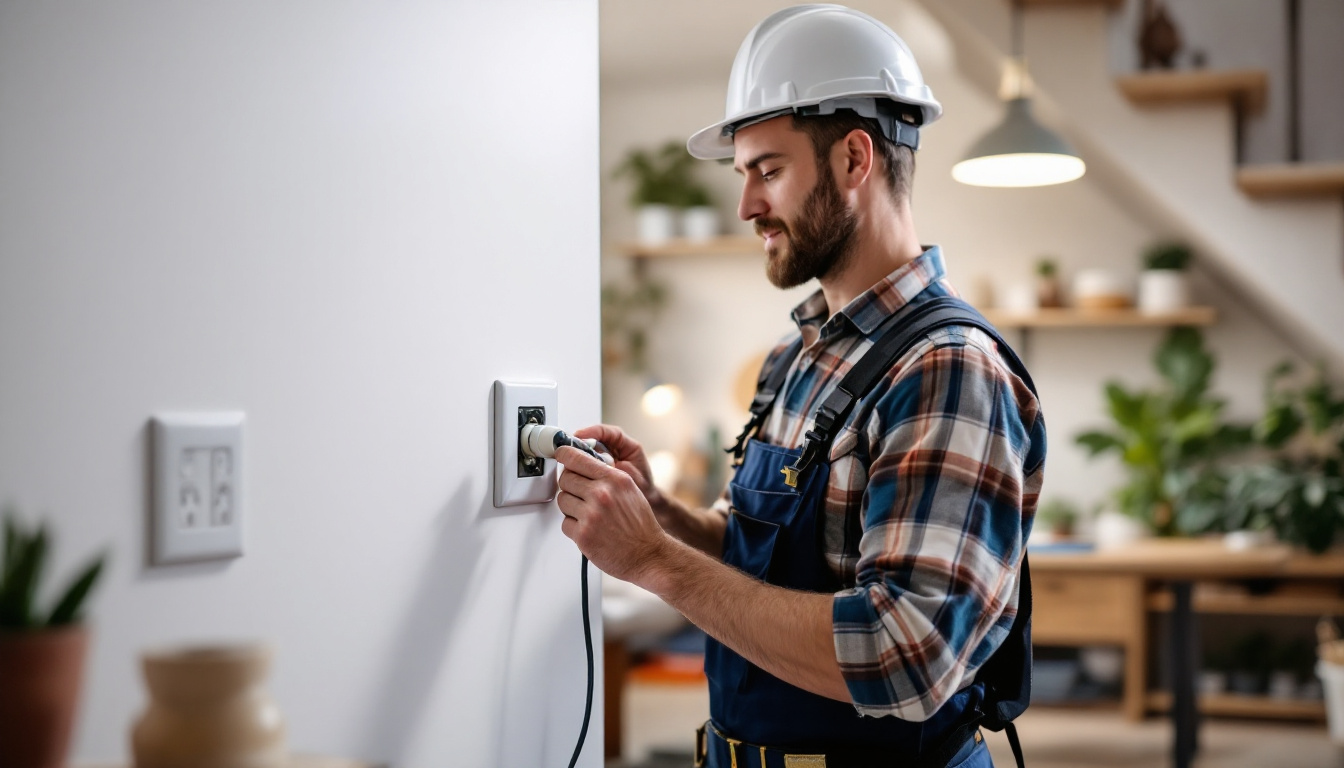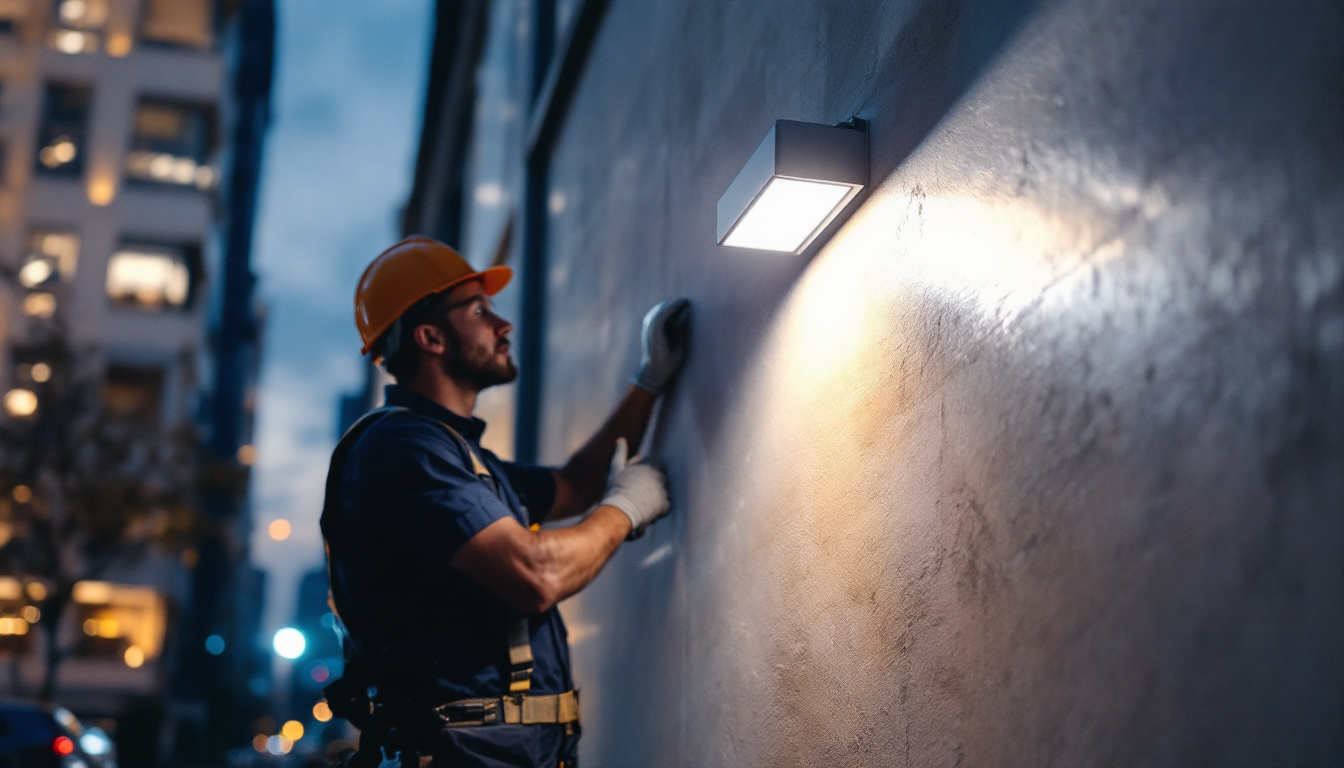
In the realm of electrical installations, light switches and outlets play a pivotal role in ensuring functionality and safety. For lighting contractors, understanding the intricacies of these components is essential not only for compliance with regulations but also for delivering quality service to clients. This article provides expert insights into the selection, installation, and maintenance of light switches and outlets, tailored specifically for professionals in the lighting industry.
Light switches are more than just simple devices that turn lights on and off. They come in various types and configurations, each suited for specific applications. A thorough understanding of these options can significantly enhance the quality of installations. From the basic functionality to the latest technological advancements, the evolution of light switches reflects the changing needs of modern living spaces.
There are several types of light switches available, each designed for different purposes. The most common types include single-pole switches, three-way switches, and dimmer switches. Single-pole switches control a light fixture from one location, making them ideal for standard applications. Three-way switches allow control from two different locations, which is particularly useful in larger spaces or hallways. Dimmer switches, on the other hand, provide flexibility in lighting levels, enhancing ambiance and energy efficiency. They can transform a stark room into a cozy retreat with just a simple adjustment, making them a favorite among homeowners looking to create a specific mood.
Additionally, smart switches have gained popularity, enabling remote control and automation through smartphones or voice commands. These modern solutions not only offer convenience but also integrate seamlessly with home automation systems, appealing to tech-savvy clients. With features like scheduling and energy monitoring, smart switches provide users with insights into their energy consumption, allowing for more informed decisions about usage and savings. The ability to control lighting from anywhere adds an extra layer of security, as homeowners can simulate occupancy even when they are away.
Proper installation of light switches is crucial for safety and functionality. First and foremost, always ensure that the power is turned off at the circuit breaker before beginning any installation work. This precaution helps prevent electrical shocks and ensures a safe working environment. Additionally, using insulated tools can further reduce the risk of accidental contact with live wires, providing an extra layer of safety during the installation process.
When installing a switch, it is essential to follow the manufacturer’s instructions closely. Pay attention to the wiring configuration, as incorrect connections can lead to malfunction or even electrical fires. For three-way switches, understanding the traveler wires is critical to ensure proper operation. Using a voltage tester can help verify connections before securing the switch in place. Furthermore, ensuring that the switch is mounted level and flush with the wall not only enhances the aesthetic appeal but also prevents undue stress on the wiring, which can lead to future issues.
Even with careful installation, issues may arise with light switches over time. One common problem is flickering lights, which can indicate a loose connection or a failing switch. In such cases, it is advisable to inspect the wiring and replace the switch if necessary. Additionally, flickering can sometimes be a sign of a larger electrical issue, such as problems with the circuit itself, which may require a more thorough investigation by a qualified electrician.
Another issue contractors may encounter is a switch that does not operate as intended. This could be due to a faulty switch or incorrect wiring. Conducting thorough troubleshooting can help identify the root cause and determine the best course of action. Educating clients on the importance of regular maintenance can also prevent many common issues from arising. Simple practices, such as checking for signs of wear or damage and ensuring that switches are not overloaded with too many fixtures, can extend the lifespan of light switches and maintain optimal performance. Regular inspections can also help catch potential problems before they escalate, ensuring a safe and well-functioning lighting system.
Outlets are equally important in any electrical installation, serving as the primary interface for powering devices. Selecting the right type of outlet for specific applications can enhance safety and functionality.
There are various types of outlets, including standard duplex outlets, GFCI (Ground Fault Circuit Interrupter) outlets, and AFCI (Arc Fault Circuit Interrupter) outlets. Standard duplex outlets are the most common and are suitable for general use. GFCI outlets are designed to protect against electrical shock in wet areas, such as kitchens and bathrooms, making them a critical choice for safety in these environments.
AFCI outlets, on the other hand, are designed to prevent electrical fires caused by arcing faults. These outlets are particularly important in living areas and bedrooms, where the risk of fire can have devastating consequences. Understanding the specific requirements for each type of outlet is essential for compliance with electrical codes and ensuring the safety of clients’ homes.
When installing outlets, it is vital to adhere to local electrical codes and regulations. Outlets should be installed at appropriate heights, typically around 12 to 18 inches from the floor, depending on the application. Additionally, ensuring that outlets are adequately spaced throughout a room can prevent overloading circuits and enhance convenience for users.
During installation, it is crucial to use the correct gauge of wire based on the outlet type and the expected load. For instance, a 15-amp outlet typically requires 14-gauge wire, while a 20-amp outlet necessitates 12-gauge wire. Proper grounding is also essential to prevent electrical shock hazards, so ensure that all outlets are grounded according to code.
Regular maintenance of outlets can extend their lifespan and ensure safe operation. Contractors should recommend periodic inspections to clients, checking for signs of wear, such as discoloration or cracking. Outlets that show any signs of damage should be replaced immediately to prevent electrical hazards.
Additionally, educating clients on the importance of not overloading outlets with too many devices can help prevent tripped breakers and potential fire hazards. Encouraging the use of power strips with built-in surge protection can also safeguard against voltage spikes that can damage sensitive electronics.
As energy efficiency becomes a growing concern, lighting contractors should consider how light switches and outlets can contribute to reducing energy consumption. Implementing energy-efficient solutions not only benefits the environment but also appeals to clients looking to lower their utility bills.
Smart switches and outlets are at the forefront of energy-efficient solutions. These devices allow users to control their lighting remotely, set schedules, and even monitor energy usage. By integrating smart technology into installations, contractors can provide added value to clients and promote energy conservation.
Furthermore, educating clients about the benefits of LED lighting can also contribute to energy efficiency. LED bulbs consume significantly less energy than traditional incandescent bulbs and have a much longer lifespan. Pairing LED lighting with smart switches can maximize energy savings and enhance the overall lighting experience.
Daylight harvesting is another effective strategy for improving energy efficiency in lighting design. By utilizing natural light during the day, contractors can reduce reliance on artificial lighting. This can be achieved through the strategic placement of windows, skylights, and light tubes, as well as incorporating dimmable lighting systems that adjust based on available daylight.
When designing lighting systems, contractors should consider the orientation of the building and the placement of fixtures to optimize natural light usage. Educating clients about the benefits of daylight harvesting can lead to significant energy savings and a more sustainable approach to lighting design.
Adhering to local and national electrical codes is paramount for lighting contractors. Compliance not only ensures the safety of installations but also protects contractors from liability issues. Understanding the regulations surrounding light switches and outlets is essential for maintaining high standards in the industry.
Each region may have specific codes and regulations governing electrical installations. It is crucial for contractors to familiarize themselves with these requirements to ensure compliance. This includes understanding the necessary permits, inspection processes, and any unique local requirements related to light switches and outlets.
Staying updated on changes to electrical codes is also essential, as regulations can evolve over time. Participating in continuing education courses and industry seminars can help contractors remain informed about the latest developments in electrical safety and compliance.
Implementing strict safety protocols during installations can prevent accidents and ensure the well-being of both contractors and clients. This includes using appropriate personal protective equipment (PPE), such as gloves and safety glasses, as well as maintaining a clean and organized work environment.
Additionally, contractors should educate clients on the importance of safety when using electrical devices. Providing information on how to properly use light switches and outlets can empower clients to take responsibility for their electrical systems, reducing the likelihood of accidents.
Light switches and outlets are fundamental components of any electrical installation, and understanding their intricacies is vital for lighting contractors. By staying informed about the latest technologies, installation best practices, and compliance regulations, contractors can provide exceptional service to their clients.
Moreover, embracing energy-efficient solutions and smart technologies can enhance the value of installations while promoting sustainability. As the industry continues to evolve, lighting contractors who prioritize safety, compliance, and innovation will undoubtedly stand out in a competitive market.
In conclusion, the knowledge and expertise surrounding light switches and outlets can significantly impact the quality of electrical installations. By applying the insights shared in this article, lighting contractors can ensure that they are well-equipped to meet the demands of their clients while fostering a safe and efficient lighting environment.
Ready to elevate your lighting installations with the finest products on the market? Look no further than LumenWholesale for all your light switch and outlet needs. We provide contractors with exceptional, spec-grade lighting products at unbeatable wholesale prices, ensuring you have access to the best without the burden of inflated markups. Our extensive selection adheres to the highest industry standards, so you can trust in the reliability and performance of every item you purchase. Plus, with the convenience of free shipping on bulk orders, LumenWholesale is your go-to source for premium lighting solutions that blend quality, affordability, and hassle-free service. Don’t compromise on your lighting projects—choose Wholesale Lighting at the Best Value and make LumenWholesale your partner in excellence.

Discover the pros and cons of T8 light bulbs for lighting contractors, including energy savings, lifespan, and installation tips—boost your lighting projects today!.

Discover the top strategies lighting contractors use to optimize outdoor spaces with LED flood lights.

Discover how installing a dryer receptacle can lead to significant cost savings for lighting contractors.

Discover how integrating LED wall packs with photocells can revolutionize your lighting business.